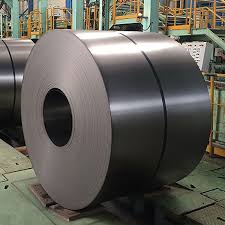In the first half of 2025, stainless steel hot rolled (HR) coil prices in India remained mostly stable, showing only a slight upward movement. Market activity was steady, supported by infrastructure projects and regular industrial demand. There were no major price shocks or disruptions, which helped both producers and buyers maintain a predictable pace of operations.
Price Movement from Q1 to Q2
According to industry data, stainless steel HR coil prices in India moved up by a small margin in the first two quarters of the year. In Q1, the average price stood at $2,182 per metric tonne, and by the end of Q2, it had inched up to $2,186 per metric tonne. That’s a 0.18% increase, reflecting a calm and balanced market environment.
This slight rise wasn’t enough to cause concern among buyers but still indicated the underlying strength of demand in key sectors. The market neither saw a dip nor an unexpected surge, which allowed for uninterrupted operations across the value chain.
What Kept Prices Stable
Several factors worked together to maintain the price stability seen in the market.
1. Steady Demand from Infrastructure Projects
The Indian government’s ongoing focus on infrastructure development continued to be a strong driver of steel consumption. Projects related to highways, metros, public transport, and industrial corridors remained active. These projects consistently require large quantities of HR coils, which helped keep demand intact.
2. Controlled Raw Material Costs
Raw materials like nickel, chromium, and iron ore, which are essential for stainless steel production, remained stable during this period. As there were no sudden spikes in input costs, manufacturers were able to keep finished product prices under control.
3. Stable Currency Exchange
The Indian rupee remained mostly steady against major currencies during the first half of the year. This helped control the cost of imported raw materials and reduced volatility in overall pricing. Stable currency movement also helped Indian producers maintain competitiveness in export markets.
4. Moderate Inventory Restocking
There was no excessive hoarding or panic buying at the start of the year. Instead, industries restocked in a measured way as demand gradually picked up pace. This helped maintain a balance between supply and consumption, preventing unnecessary pressure on prices.
For latest updates, price queries, demand forecasts, and supplier information related to Stainless Steel HR Coil Prices, submit your request here: https://www.price-watch.ai/contact/
5. Government Procurement Programs
In addition to private sector demand, regular procurement from government bodies in sectors like railways, defence, and energy helped provide a stable demand base. This helped producers avoid idle capacity and continue production at a stable pace.
Early-Year Pressure from Imports
In the first quarter, domestic producers faced some pressure from increased imports. Cheaper material entering the Indian market, especially from East Asian countries, added competitive stress. Some buyers preferred imported options due to slight price advantages, which put a check on local price hikes.
However, this situation didn’t last long. By the second quarter, a balance was restored as infrastructure demand and government spending kept local mills active.
Market Sentiment in H1 2025
Overall sentiment in the HR coil market during the first six months of 2025 was stable and cautious. Producers maintained regular supply, buyers made timely purchases, and there was no excessive stockpiling. With no extreme price movements, companies across sectors were able to manage procurement and planning efficiently.
This kind of price behavior helped bring back confidence to sectors that had faced uncertainties over the last few years due to global disruptions, logistics issues, and raw material fluctuations.
Sector-Wise Impact
-
Construction: Large-scale infrastructure and real estate developments continued to absorb a healthy share of stainless HR coils. Builders preferred stable prices as it helped them manage budgets better.
-
Automotive and Engineering: Auto manufacturers and equipment makers, who rely on HR coils for frames and base structures, benefited from predictable input costs.
-
Industrial Fabrication: Fabricators serving both domestic and export markets were able to operate smoothly due to stable supply and manageable pricing.
What to Expect in the Second Half of 2025
The outlook for the rest of the year will depend on a few key factors:
-
Government project execution: Continued rollout of infrastructure and industrial schemes will directly impact demand.
-
Raw material pricing: If nickel or other inputs see global price shifts, domestic prices may also adjust.
-
Import trends: A surge in imports could create competition for local mills, potentially affecting margins.
-
Currency movement: A weakening rupee could make imports costlier and influence pricing decisions across the board.
For now, the second half of 2025 is expected to follow the same pattern of stable to slightly rising prices, provided there are no external shocks.
Conclusion
Stainless steel HR coil prices in India moved up slightly in the first half of 2025 from $2,182/MT in Q1 to $2,186/MT in Q2. This 0.18% rise reflected steady demand and controlled market conditions.
Key sectors like infrastructure, construction, and manufacturing remained active, while input costs and currency exchange rates stayed favorable. The mild upward movement in price was manageable for buyers and allowed producers to run operations without pressure.
Unless global or domestic market conditions shift sharply, the current trend is likely to continue into the second half of the year, giving the industry a welcome period of predictability.



